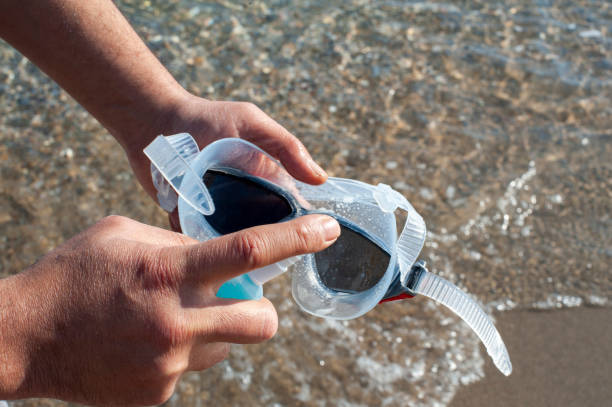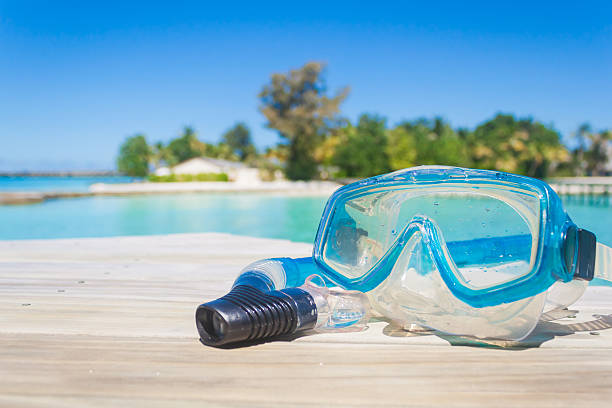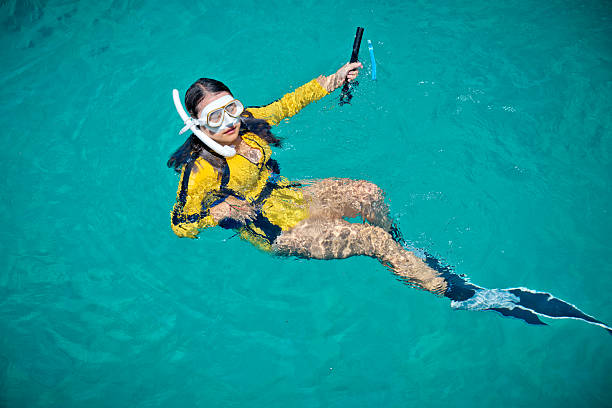Roupas de mergulho e roupas secas são essenciais equipamentos para esportes aquáticos Para indivíduos que praticam diversas atividades aquáticas. Esses trajes especializados oferecem proteção, isolamento e conforto em diferentes ambientes aquáticos. Neste artigo, vamos nos aprofundar nas complexidades dos trajes de neoprene e dos trajes secos, explorando sua composição, funcionalidade, prós e contras, e as principais diferenças entre trajes de neoprene e secos. Seja você surfista, mergulhador ou simplesmente um entusiasta de esportes aquáticos, entender a adequação desses trajes melhorará muito sua experiência na água.
Fatos secos vs fatos de mergulho
| Mais flexível e permite uma maior amplitude de movimentos | Fatos secos | Fatos de mergulho |
| Material | Materiais impermeáveis e duráveis, como borracha vulcanizada, neoprene ou tecidos respiráveis com costuras impermeáveis | Neoprene, borracha ou materiais sintéticos com propriedades isolantes |
| Função | Mantenha o usuário completamente seco, evitando a entrada de água | Permite que a água entre e forme uma camada fina que é aquecida pelo calor do corpo, proporcionando isolamento |
| Aplicativo | Ideal para água fria ou condições extremas, como mergulho profissional, mergulho com snorkel em água fria e exposição prolongada a baixas temperaturas | Adequado para temperaturas de água moderadas a quentes, comumente usado em surfe, natação e outros esportes aquáticos |
| Ajustar | Ajuste mais solto com espaço para camadas adicionais, pode ser personalizado para um melhor ajuste | Ajuste perfeito que se adapta ao corpo, permitindo liberdade de movimentos |
| Mobilidade | Mais volumoso e menos flexível, limitando o movimento até certo ponto | Ajuste mais solto com espaço para camadas adicionais pode ser personalizado para um melhor ajuste |
| Custo | Geralmente mais caros devido à sua construção e características especializadas | Geralmente mais acessíveis do que roupas secas |
O que são roupas de mergulho?

O que é uma roupa de mergulho?
UM roupa de mergulho é uma vestimenta especialmente projetada, feita principalmente de neoprene, um tipo de borracha sintética. Ela se ajusta perfeitamente ao corpo, proporcionando isolamento e proteção em ambientes aquáticos. Ao contrário das roupas comuns, os trajes de mergulho autônomo são projetados especificamente para reter uma fina camada de água entre o traje e a pele. Essa água retida é então aquecida pelo calor do corpo, formando uma barreira protetora contra a água fria externa.
Do que são feitas as roupas de mergulho?
As roupas de mergulho são predominantemente feitas de neoprene, um material flexível e durável. O neoprene é criado pela polimerização do cloropreno, resultando em uma substância semelhante à borracha com excelente resistência à temperatura, produtos químicos e óleos. A espessura do neoprene usado em roupas de mergulho pode variar, com diferentes níveis de espessura oferecendo diferentes graus de proteção térmica. Além disso, as roupas de mergulho também podem incorporar outros materiais, como náilon, para aumentar sua durabilidade e flexibilidade.
Para que servem as roupas de mergulho?
O principal objetivo de uma roupa de mergulho é fornecer isolamento térmico ao usuário em ambientes com água fria. Ao reter e aquecer uma fina camada de água contra o corpo, as roupas de mergulho ajudam a manter uma temperatura corporal confortável durante a exposição prolongada à água. Além do isolamento, as roupas de mergulho também oferecem proteção contra abrasões, picadas e contato com águas-vivas, tornando-as ideais para diversos esportes e atividades aquáticas.
Como funciona uma roupa de mergulho?
Como a roupa de neoprene mantém você aquecido? As roupas de neoprene oferecem isolamento e proteção térmica utilizando diferentes fatores. A espessura do neoprene usado em uma roupa de neoprene determina sua capacidade de reter o calor do corpo. Neoprene mais espesso proporciona maior isolamento, mas é importante encontrar um equilíbrio entre espessura e flexibilidade para evitar restringir os movimentos.
Além disso, uma camada de água retida entre o traje e a pele atua como isolante, absorvendo e retendo o calor do corpo, reduzindo a transferência de calor para a água circundante. Os trajes de neoprene também proporcionam flutuabilidade, facilitando a flutuação de nadadores e mergulhadores. A flexibilidade do neoprene permite uma ampla amplitude de movimentos, essencial para alcançar o desempenho ideal e prevenir a fadiga durante atividades aquáticas.
Prós e contras dos trajes de mergulho
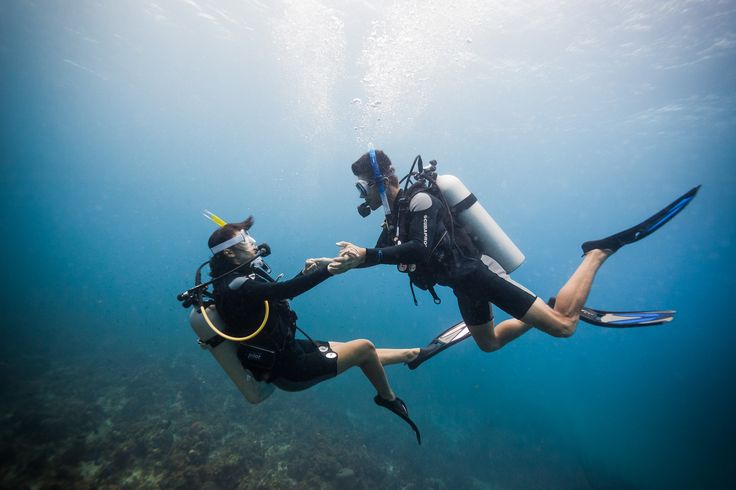
As roupas de mergulho oferecem inúmeras vantagens, mas também apresentam algumas desvantagens. Entender os prós e os contras das roupas de mergulho ajudará você a tomar uma decisão informada ao considerá-las para suas atividades aquáticas.
Prós
- Fornece isolamento e proteção térmica em ambientes de água fria.
- Oferece proteção contra abrasão e ardência.
- Aumenta a flutuabilidade, auxiliando nas técnicas de flutuação e natação.
- Permite uma ampla gama de movimentos devido à flexibilidade do neoprene.
- Amplamente disponível e relativamente acessível em comparação com roupas secas.
Contras
- Menos eficaz em condições extremamente frias em comparação com roupas secas.
- Pode ser restritivo e desconfortável se o ajuste não for adequado.
- Pode levar algum tempo para se acostumar à sensação de umidade na pele.
- Requer cuidados e manutenção adequados para prolongar sua vida útil.
- Pode não fornecer isolamento suficiente durante períodos prolongados de exposição à água.
O que são Drysuits?

O que é um traje seco?
Um traje seco é uma vestimenta que cobre todo o corpo, projetada para manter o corpo seco durante atividades aquáticas. Ao contrário dos trajes de mergulho, que dependem da retenção de uma fina camada de água contra o corpo para fornecer isolamento, os trajes secos são completamente selados e impermeáveis à água. Eles usam camadas de tecido respirável, como Gore-Tex, e técnicas avançadas de vedação no pescoço, pulsos e tornozelos para garantir que nenhuma água entre no traje. Esse design permite que os trajes secos forneçam isolamento, mantendo uma camada isolante de ar próxima ao corpo, em vez de água. Como resultado, os trajes secos oferecem proteção e conforto superiores em temperaturas mais frias da água, tornando-os ideais para atividades como mergulho, caiaque e vela.
Do que são feitos os trajes secos?
Trajes secos são normalmente feitos de tecidos laminados, como Gore-Tex, que oferecem resistência à água e respirabilidade superiores. Esses tecidos consistem em múltiplas camadas, incluindo uma membrana impermeável, uma camada isolante e uma camada externa protetora. A membrana impermeável atua como uma barreira contra a água, garantindo que nenhuma umidade penetre no traje. A camada isolante proporciona aquecimento, tornando o traje adequado para águas frias. A camada externa protetora aumenta a durabilidade e protege contra abrasões e rasgos. Essa construção garante que o traje permaneça impermeável, ao mesmo tempo que permite a transferência eficiente de umidade e suor para longe do corpo, mantendo o usuário seco e confortável.
Para que são usados os trajes secos?
O principal objetivo de uma roupa seca é manter o usuário seco, criando uma barreira selada contra a entrada de água. Ao impedir que a água entre em contato com o corpo, as roupas secas proporcionam isolamento e proteção excepcionais em águas extremamente frias. Além disso, as roupas secas também oferecem a vantagem da versatilidade, pois podem ser usadas com camadas isolantes por baixo para se adaptarem a diferentes temperaturas da água.
Como funciona um traje seco?
As roupas secas funcionam empregando uma combinação de métodos de vedação e tecnologias avançadas de tecido para impedir a entrada de água. As costuras de uma roupa seca são totalmente seladas e seladas, garantindo que nenhuma água passe por nenhuma parte da roupa. Além disso, as vedações do pescoço e dos pulsos são projetadas para serem estanques, impedindo a entrada de água nessas áreas vulneráveis.
A principal função do tecido usado em roupas secas é criar uma barreira respirável que permite a saída da umidade e do suor, ao mesmo tempo que impede a entrada de água no traje. As propriedades respiráveis do tecido ajudam a regular a temperatura corporal e reduzem o risco de superaquecimento durante atividades aquáticas intensas.
Prós e contras dos trajes secos

Assim como as roupas de mergulho, as roupas secas têm suas próprias vantagens e desvantagens. Compreender isso ajudará você a determinar se uma roupa seca é a escolha certa para suas atividades aquáticas específicas.
Prós
- Mantém o usuário completamente seco, proporcionando isolamento e proteção ideais em condições de água fria.
- Altamente versáteis, pois podem ser usados com diferentes camadas dependendo da temperatura da água.
- Permite períodos prolongados de exposição à água sem sentir o desconforto da umidade.
- Oferece durabilidade superior, especialmente para indivíduos envolvidos em atividades aquáticas exigentes.
- Pode ser facilmente reparado em comparação com roupas de mergulho.
Contras
- Geralmente mais caros quando comparados às roupas de mergulho.
- Pode ser mais volumoso e restringir os movimentos até certo ponto.
- Requer treinamento e prática adequados para lidar com situações de emergência, como controle de flutuabilidade ou fuga de enredamento.
- Pode causar superaquecimento em temperaturas de água mais altas se a disposição adequada das camadas não for utilizada.
- Menos flutuabilidade em comparação com roupas de mergulho, exigindo coletes salva-vidas adicionais para algumas atividades aquáticas.
Diferença entre um traje seco e um traje de mergulho
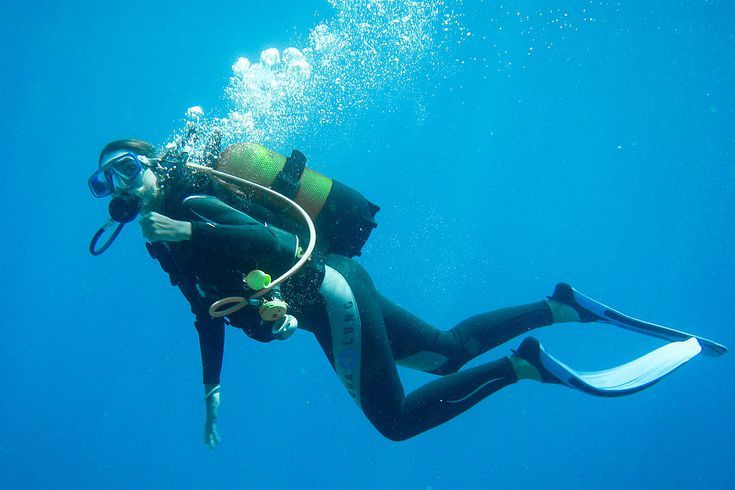
Embora tanto roupas secas quanto roupas de mergulho sirvam para fornecer isolamento e proteção em ambientes aquáticos, elas diferem significativamente em design, construção, vedação e aplicação. Entender essas diferenças fundamentais ajudará você a tomar uma decisão informada ao escolher entre as duas.
Design e Construção
As técnicas de construção de roupas de mergulho e roupas secas variam significativamente.
Os fatos de mergulho são normalmente construídos com costuras invisíveis, coladas e, às vezes, seladas. Os painéis de neoprene do traje são primeiro colados e depois costurados, com a agulha penetrando apenas na camada superficial do neoprene, minimizando a entrada de água pelas costuras.
Em contraste, os fatos secos empregar costuras totalmente seladas e seladas para criar uma barreira estanque. Essas costuras geralmente são reforçadas com camadas adicionais de tecido e materiais de vedação, garantindo que não haja pontos de entrada de água em todo o traje.
Os sistemas de entrada de roupas de mergulho e roupas secas também são diferentes.
As roupas de mergulho geralmente possuem um zíper traseiro para entrada, embora algumas possam apresentar zíperes no peito ou sistemas de entrada frontal. As roupas secas, por outro lado, geralmente possuem um zíper frontal ou traseiro, acompanhado de uma aba sobreposta e mecanismos de vedação adicionais para fornecer máxima proteção contra água.
Vedação e Proteção contra Água
Uma das diferenças fundamentais entre roupas de mergulho e roupas secas reside em seus métodos de vedação e capacidade de proteção contra água. As roupas de mergulho dependem de uma combinação da espessura do neoprene e da camada de água retida para isolamento e proteção contra água fria.
Os trajes secos, por outro lado, criam uma vedação completa contra a entrada de água. Isso é conseguido por meio de vedações no pescoço e nos pulsos, normalmente feitas de látex ou neoprene. Essas vedações são projetadas para manter a elasticidade e a estanqueidade, impedindo a entrada de água no traje. Além disso, os trajes secos possuem mecanismos avançados de vedação, como meias ou botas integradas, para garantir que a água não entre pela área dos pés.
Propriedades térmicas
As propriedades térmicas de roupas de mergulho e roupas secas variam de acordo com seu design e finalidade. As roupas de mergulho dependem principalmente do isolamento fornecido pelo neoprene e da camada de água retida. A espessura do neoprene influencia o calor da roupa, com neoprene mais espesso oferecendo maior isolamento. As roupas de mergulho estão comumente disponíveis em várias opções de espessura, atendendo a diferentes temperaturas da água.
Por outro lado, as roupas secas são excelentes em condições extremas de água fria. Ao criar uma barreira completa contra a água, as roupas secas permitem que o usuário permaneça seco e mantenha a temperatura corporal de forma mais eficaz. As roupas secas são normalmente usadas em situações em que se espera exposição prolongada à água fria, como mergulho no gelo ou exploração em regiões polares.
Diferenças nas aplicações
Quando se trata de surfe e outros esportes aquáticos, a escolha entre roupas de neoprene e roupas secas depende de vários fatores. As roupas de neoprene são geralmente preferidas para o surfe devido à sua flexibilidade, facilidade de movimento e capacidade de fornecer isolamento e proteção contra abrasões. Os surfistas costumam usar roupas de neoprene com neoprene mais fino em águas mais quentes e neoprene mais espesso em águas mais frias.
Embora os trajes secos possam não ser ideais para atividades típicas de surfe devido ao seu volume e restrições de movimento, eles encontram aplicações em esportes aquáticos específicos. Praticantes de stand-up paddle, caiaque ou indivíduos envolvidos em atividades que exigem imersão prolongada podem optar por trajes secos por sua proteção superior contra a água e conforto.
Mergulho e Exploração Subaquática
Para atividades de mergulho autônomo e com snorkel, as roupas secas costumam ser a escolha preferida devido à sua capacidade de manter o usuário seco e aquecido em ambientes com águas frias. As roupas secas são excelentes em fornecer isolamento, especialmente durante mergulhos mais longos ou em águas extremamente frias. Elas também oferecem maior controle de flutuabilidade e a possibilidade de usar camadas isolantes, permitindo que os mergulhadores personalizem sua proteção térmica de acordo com a temperatura da água.
No entanto, roupas de mergulho ainda são comumente usadas no mergulho, principalmente em águas mais quentes. Elas fornecem isolamento térmico adequado para mergulhos mais curtos e são favorecidas por sua flexibilidade e facilidade de movimentação debaixo d'água.
Atividades em clima frio
Em temperaturas congelantes, os trajes secos tornam-se vitais para quem pratica atividades em clima frio. A natureza impermeável dos trajes secos impede qualquer contato com a água, mantendo o usuário seco e reduzindo significativamente o risco de hipotermia. Esses trajes são particularmente populares entre mergulhadores no gelo, atletas profissionais de esportes aquáticos de inverno e indivíduos que se aventuram em ambientes de águas extremamente frias.
Roupas de mergulho, embora capazes de oferecer isolamento e proteção, podem não fornecer calor suficiente em condições congelantes, pois a água retida perde calor rapidamente. Roupas de mergulho são mais comumente usadas em águas moderadamente frias ou como roupas íntimas por baixo de roupas secas para aumentar o isolamento.
Quando usar uma roupa seca?

A escolha de uma roupa seca em vez de uma roupa de mergulho é justificada em certos cenários onde o isolamento e a proteção completa contra a água são de extrema importância. Aqui estão alguns casos em que a roupa seca é a escolha preferida:
- Exposição prolongada à água fria: Se você pretende ficar em água fria por longos períodos, como durante mergulhos no gelo ou passeios de barco no inverno, as qualidades superiores de isolamento e proteção contra água de uma roupa seca a tornam a escolha ideal.
- Condições climáticas extremas: Ao praticar atividades aquáticas em climas extremamente frios, como expedições polares ou passeios de snowmobile em lagos congelados, um traje seco é essencial para garantir segurança e conforto.
- Necessidade de camadas versáteis: Roupas secas permitem a adição de camadas isolantes por baixo, permitindo que você se adapte facilmente a diferentes temperaturas da água. Essa flexibilidade é particularmente benéfica se você planeja praticar atividades que variam de águas frias a mais quentes.
Quando usar uma roupa de mergulho?

Roupas de neoprene oferecem grande versatilidade e são comumente usadas em diversas atividades aquáticas. Aqui estão algumas situações em que o uso de uma roupa de neoprene é recomendado:
- Temperaturas moderadas da água: As roupas de mergulho são adequadas para temperaturas da água que variam de moderadamente frias a moderadamente frias. Elas oferecem isolamento térmico e proteção eficazes durante atividades como natação, surfe, caiaque e stand-up paddle.
- Shorter duração atividades aquáticas: Roupas de mergulho são ideais para atividades de curta duração, permitindo que a camada de água retida forneça isolamento suficiente. Mergulhos com snorkel, mergulhos curtos ou sessões de natação recreativa em águas mais frias podem ser realizados confortavelmente com uma roupa de mergulho.
- Facilidade de movimento: As roupas de mergulho são conhecidas por sua flexibilidade e conforto, permitindo uma ampla gama de movimentos. Isso as torna uma escolha popular para diversos esportes aquáticos onde mobilidade e técnica são cruciais.
Conclusão
Concluindo, roupas de neoprene e roupas secas são itens indispensáveis para quem se aventura em atividades aquáticas. As roupas de neoprene oferecem isolamento, proteção e flexibilidade, tornando-as adequadas para uma ampla gama de esportes aquáticos em diversas temperaturas. As roupas secas, por outro lado, oferecem proteção completa contra a água e isolamento ideal, tornando-as essenciais para expedições e atividades em águas frias.
Entender a construção, a finalidade e as principais diferenças entre esses trajes permitirá que você tome decisões informadas com base nas suas necessidades específicas e nas condições que enfrentará. Seja você surfista, mergulhador ou explorador de águas geladas, escolher o traje certo aumentará seu conforto, segurança e desempenho na água.
Perguntas frequentes sobre roupas de mergulho e roupas secas
P1: Qual é a diferença entre uma roupa de mergulho e uma roupa seca?
Uma roupa de mergulho e uma roupa seca têm finalidades diferentes, dependendo da temperatura da água e da atividade. Uma roupa de mergulho é feita de neoprene e retém uma fina camada de água entre a roupa e a pele, que é aquecida pelo calor do corpo, tornando-a adequada para águas moderadas a frias. Por outro lado, uma roupa seca é projetada para manter o usuário completamente seco, vedando a água com punhos justos e um zíper impermeável, permitindo o uso de camadas isolantes por baixo. As roupas secas são ideais para águas extremamente frias ou exposição prolongada, pois oferecem proteção térmica superior às roupas de mergulho.
P2: Como deve ser o ajuste de uma roupa de mergulho?
Uma roupa de mergulho deve se ajustar perfeitamente ao corpo, sem ser excessivamente apertada ou restritiva. Ela deve permitir uma amplitude de movimento completa, minimizando a entrada de água. As principais áreas a serem verificadas incluem o pescoço, os pulsos e os tornozelos, que devem vedar adequadamente para evitar o escoamento da água. Não deve haver espaços grandes ou áreas soltas, especialmente ao redor da região lombar, ombros e joelhos. Uma roupa de mergulho bem ajustada pode parecer um pouco apertada em terra, mas deve ser confortável na água, garantindo isolamento térmico e flutuabilidade eficazes.
P3: Posso usar uma roupa de mergulho em água fria?
Sim, você pode usar uma roupa de mergulho em água fria, mas a espessura e o tipo da roupa são cruciais. Para água fria, normalmente definida como temperaturas da água abaixo de 15 °C (60 °F), recomenda-se uma roupa de mergulho com espessura de pelo menos 5 mm. Muitas roupas de mergulho para água fria têm material mais espesso no tronco para aquecimento e material ligeiramente mais fino nos membros para flexibilidade. Características como costuras seladas, forros térmicos e um ajuste confortável ajudam a reter o calor do corpo. No entanto, para águas extremamente frias ou exposição prolongada, uma roupa seca pode ser mais apropriada para garantir melhor isolamento e conforto.
Q4: Como devo fazer a manutenção e os cuidados com minha roupa de mergulho?
A manutenção e os cuidados com sua roupa de neoprene envolvem várias etapas para garantir sua longevidade. Enxágue-a bem com água doce após cada uso para remover sal, areia e cloro. Evite usar água quente ou detergentes agressivos. Seque sua roupa de neoprene à sombra, do avesso, e evite a luz solar direta ou fontes de calor, que podem danificar o neoprene. Guarde-a deitada ou pendurada em um cabide largo para evitar vincos e manter seu formato. Inspecione regularmente se há rasgos ou danos e repare-os imediatamente para evitar desgaste adicional e manter suas propriedades isolantes.
P5: Quais são as principais características que você deve procurar em uma roupa seca?
As principais características de uma roupa seca incluem materiais impermeáveis de alta qualidade, como trilaminado ou neoprene, e vedações robustas no pescoço, pulsos e tornozelos para evitar a entrada de água. Um zíper durável e impermeável é essencial para manter a estanqueidade. Procure uma roupa com áreas reforçadas em pontos de alto desgaste, como joelhos e cotovelos. Algumas roupas secas oferecem botas ou meias embutidas e capuzes integrados para proteção adicional. Considere a facilidade de vestir e despir a roupa e verifique se ela possui recursos ajustáveis para garantir um ajuste confortável e seguro para uso prolongado.
P6: Posso usar uma roupa seca para mergulho e outros esportes aquáticos?
Sim, uma roupa seca pode ser usada para mergulho, bem como para outros esportes aquáticos, como caiaque, stand-up paddle e vela. Sua principal vantagem é fornecer proteção térmica em águas extremamente frias, mantendo você seco. Para mergulho, uma roupa seca permite o uso de camadas isolantes por baixo, proporcionando maior aquecimento em comparação com roupas de neoprene. Certifique-se de que a roupa seca seja apropriada para a atividade, com áreas reforçadas para maior durabilidade e flexibilidade, facilitando os movimentos. Recomenda-se treinamento adequado no uso da roupa seca, especialmente para mergulho, para lidar com o controle de flutuabilidade e os procedimentos de emergência de forma eficaz.
